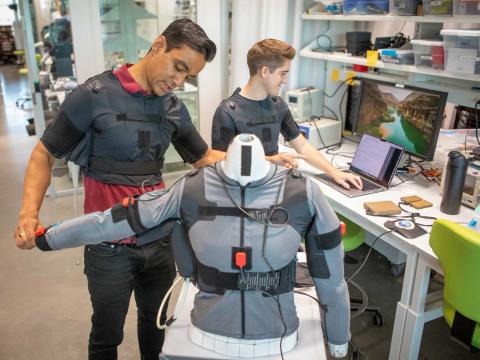President's Commentary: Trusting AI and All War Fighting Technologies
In 2016, researchers at Georgia Technology Research Institute (GTRI) studied people’s willingness to trust a robot. They found that people were willing to trust a robot to lead them out of a building in a mock fire situation, even when the robot was malfunctioning or behaving strangely.
“People seem to believe that these robotic systems know more about the world than they really do and that they would never make mistakes or have any kind of fault,” Alan Wagner, a GTRI senior research engineer, said in an article about the study. “In our studies, test subjects followed the robot’s directions even to the point where it might have put them in danger had this been a real emergency.”
Three years later, another research team from the Universities of Bristol and Manchester in the United Kingdom found that people were more willing to trust robotic systems with a “theory of mind” capability, meaning the machines could understand human beliefs and intentions.
While mechanical robots, autonomous systems and artificial intelligence (AI) software have made impressive strides in recent years, trust remains a challenge, which is why the U.S. Defense Department named “trusted AI and autonomy” one of 14 critical technology areas for national security. Trusted AI and autonomy is considered an effective adoption area of technology. “AI holds tremendous promise to improve the ability and function of nearly all systems and operations. Trusted AI with trusted autonomous systems are imperative to dominate future conflicts,” according to the Office of the Under Secretary of Defense for Research and Engineering.
In a budget analysis released in November, the National Science and Technology Council reported that for fiscal years 2021-2025, nonclassified annual and supplemental funding for federal agency information technology and AI-related research and development programs increased $2.8 billion over the five-year period, growth of 6% per year.
Industry also has identified AI as a critical technology area for investment. In January, President Donald Trump announced that SoftBank, Oracle and OpenAI would invest $500 billion in the Stargate project, which aims to advance AI technologies. Microsoft, NVIDIA and British chip designer Arm were listed as technology partners in the project, and the president indicated the government will support the effort by reducing AI-related regulations. President Trump also signed an executive order that calls for an AI action plan within 180 days.
It is broadly recognized, however, that AI and cybersecurity are technological Siamese twins tied so closely that one may not function optimally without the other. The Forbes article “The State of AI Cybersecurity in 2025 and Beyond” describes this year as a watershed moment in the convergence of AI and cybersecurity.
“On the one side, AI-powered products improve threat detection, automate response mechanisms and offer predictive analytics to help prevent possible attacks,” the article states. “However, the same characteristics that make AI important for defense also make it a powerful weapon in the hands of attackers. Malicious actors use AI to create advanced tools like polymorphic malware, perform automated reconnaissance and carry out highly targeted phishing attacks. This dual nature of AI generates a continual arms race in which the rate of innovation on both sides constantly raises the stakes.”
Without cybersecurity, AI programs will never fully gain the confidence of warfighters, intelligence operatives, first responders and others who help secure and defend the nation.
Trusted AI is one of four technology areas to be explored at the upcoming TechNet Emergence. The other technology areas are advanced communications and immersive technology, advanced computing and human-machine interfaces, and cybersecurity and data management.
With TechNet Emergence, we intend to continue the AFCEA tradition of exploring technology’s horizons and supporting a search for solutions—across all critical technology areas—that our warfighters can trust.





Comments